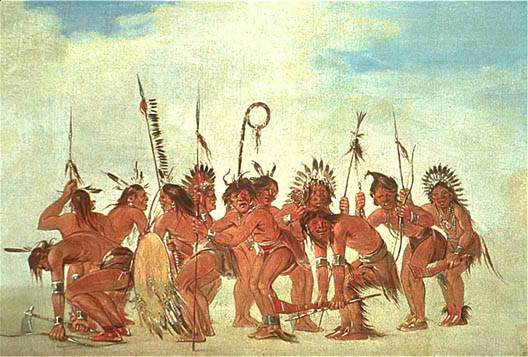Minnesota Indian tribes lived within the borders of Lake Superior. The Indian reservations in mn have made huge contributions to what has become of Minnesota in today’s time. The land was full of hills and lakes, and at the same time river valleys and ridges, making it a good living place for Native American tribes in Minnesota who were into fishing and hunting. This explained why the majority of the Minnesota tribes’ way of life was focused on hunting-gathering, farming, fishing and trapping of wild games. Moreover, according to some artifacts and remnants, Native Americans in Minnesota lived in tepees, wigwams, and longhouses. As for the dominating language, Minnesota Native American tribes were adept at speaking through Muskogean, Athabaskan, and Algonquian.
Looking through the Minnesota timeline, during the Archaic period, early signs of Indian tribes in Minnesota were using stones in their creation of houses, weapons, and tools. This was around 7000 BC. Minnesota Native Americans were also directly affected the creation of the Mississippian culture as it spread all throughout many areas in North America. By 1659, the concept of fur trading has already been introduced to the tribes in Minnesota. By 1770, the Grand Portage area in Northern Minnesota was already established as a fur trading crossroads. Also, Minnesota Native tribes also got involved in the Dakota War that transpired in 1862. It was a war of the Sioux Indians that killed approximately 1,000 individuals. There was a decline in the population of the Native American tribes of Minnesota due to the many sicknesses brought by the Europeans. These included tuberculosis, cholera, influenza, and smallpox.
Follows are some of the famous Minnesota Native American tribes:
Minnesota Indian Tribe – Dakota

This Minnesota Indian tribe was also given the name of Sioux, a French term. They were one of the few Minnesota Native Americans that really originated there. In fact, the Dakota tribe had prospered immensely in Minnesota. Originally, the tribe was composed of 4 bands, namely Mdewakanton, Wahpekute, Sisseton, and Wahpeton.All of these bands surrounded the Minnesota River. These four fueled a war against the United States during 1862 because of the many violations that have transpired against the different treaties that they signed. Part of the treaty was the paying of the lands that the Americans took, as well as the provision of sustenance in terms of healthcare and food, which the Americans failed to provide. Unfortunately, the war ended in vain with the tribe losing. Not only were many killed, the United States ended up canceling the treaties and even forcing the Dakota people outside of State of Minnesota. The only Indians of Minnesota that were allowed to stay were those who pledge allegiance to the United States. In fact, 80% of the land abandoned by those who were cast away was given to the loyalist.
Minnesota Indian Tribe – Ojibwa

This Native American Minnesota tribe also went with the name of Chippewa. They were fluent speakers of the Algonquian language. According to historical records, they were strongly affiliated with the Ottawa and Potawatomi tribes. At the same time, it was further determined that the coming together of the Native American in Minnesota paved way for the formation of the Ojibwa tribe in the 1600s. The members of this Minnesota Indian tribe were known for being good in hunting and fishing. The people cannot exactly do farming because the coldness was not good for planting. Additionally, the Minnesota Indian tribe also discovered their skills in pottery and making ceramics. They sided with the French people during the war. In fact, these French were even allowed to marry Chippewa women. The Ojibwa tribe’s alliance with the French went even towards the context of Politics. As for the American Revolution time, this Minnesota Indian tribe gave their aid to the British armies.Their international relations also helped them do good in their trading of fur.
Minnesota Indian Tribe – Winnebago

This Minnesota Indian tribe was discovered by the white population in the year 1634. It was the Frenchman Nicollet who found out about them around Wisconsin. It was not known how long the tribe has been before the whites came along. Together with the Menominee tribe, they provided dwellings for the Potawatomi and Ottawa tribe. These two tribes were forced to evacuate from their own reservations by the Iroquois people themselves. Another set of tribes that were given home by he Winnebago include the Sauk and Fox who were also driven from their own reservations. These two last mentioned tribes were of bad relations with the French. However, despite the Winnebago helping them, the latter was still able to remain in close ties with the French, not deterring their trading activities. Basically, the tribe was in good relationship with the tribes around them, making them the first option everytime others get driven away.
dakota tribe facts, native American identity issues, Indian cultural identity, Dakota Sioux tribe, native American identity crisis, Dakota tribe religion, when did the Dakota come to Minnesota, Dakota tribe social structure
